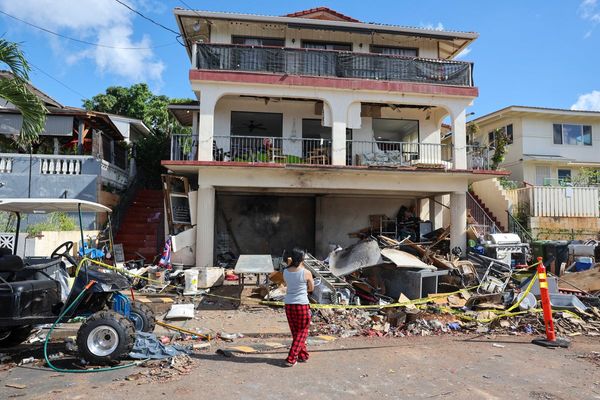The recent floods that hit the city has again triggered a Storm Water Drain (SWD) encroachment clearance drive like many times before. But the city’s civic body feels the floods earlier this month were mainly caused by overflowing lakes.
The Bruhat Bengaluru Mahanagara Palike (BBMP) said a total of 162 lakes were filled to the brim, of which 126 breached. A similar situation prevailed in 2016 as well, causing widespread floods in the south eastern parts of the city. The worst hit areas during the floods earlier this month were between the overflowing Bellandur and Varthur lakes.
This only points to severely dwindled water-holding capacity of our lakes, say lake conservation experts. With no programme to desilt lakes regularly, the water-holding capacity of lakes is severely compromised, they argue. A study has shown that in the year 1800, the city’s water bodies had a cumulative capacity to hold 35 tmcft of water. The average rainfall the city receives today is estimated around 15 tmcft of water and this year, it was only marginally higher. However, if most of the city’s lakes are overflowing and there are floods, it only means their holding capacity has dwindled severely.
“Some of our lakes may not have been desilted ever over the last three decades. How can we expect them to hold water? Desilting needs to be done regularly and scientifically with an ecological perspective,” said Leo Saldanha of Environment Support Group (ESG). For instance, a bathymetric survey of Bellandur lake estimated 7.3 million cubic metres of silt sedimentation in the lake in 2016 and desilting has been taken up since then. However, it was stopped in April 2022 over rains.
With a slew of lake rejuvenation projects across the city over the last five years, some of the lakes have been desilted, but seem to be no better compared to earlier. “In most of the rejuvenated lakes, we find desilting to only be superficial. For instance, documents dating back to 1970 show the deepest point of Bellandur lake to be 10 metres. But today, it is hardly a few feet and the ongoing desilting doesn’t restore the earlier depth. Most of the rejuvenated lakes have today become very shallow, with water-holding capacity severely compromised,” said V. Ramprasad, lake conservationist from Friends of Lakes.
The way lakes are being desilted also add to the problems, argues Mr. Saldanha. “Desilting has become a contractor driven exercise. They run JCBs on the lake bed, which leads to compacting of silt with construction debris, sewage, plastic and other materials creating an impermeable concrete like layer of what is called slag, into which water doesn’t seep in. The foreshore of a lake needs to be a slope, so that the vegetation at the edge of the lake filters away the nutrients and lets clean water into the lake. But we are desilting our lakes like a soup bowl and concretisation of SWDs also removes natural filters that used to avoid rapid silt sedimentation in the lakes,” he explained.
He added that the procedures of desilting and rejuvenation of lakes was part of Justice N. K. Patil Report upheld by the High Court and later incorporated in the Karnataka Tank Conservation and Development Authority Act, 2018 and most of the rejuvenation projects run by the civic body were violating these norms.
Lake conservationist S. Vishwanath added that one of the biggest issues civic agencies today faced was what to do with the silt removed from lake beds. “Earlier farmers around the lakes used to use that for it was considered fertile. Today neither are there farmers in these areas, nor is this soil fertile. It will have a high concentration of pollutants.”
(Readers may email their comments to letters.bangalore@thehindu.co.in)
Bellandur lake, Varthur lake, Sowl Kere, Chellakere, Vibhutipura lake, Horamavu Agara lake, Kasavanahalli, Kaikondrahalli lakes, Nelagedranahalli lake, Uttarahalli, Gubbalala, Agara, Iblur, Gottigere, Yelahanka, Allalasandra, Jakkur, and Rachenahalli lakes.







